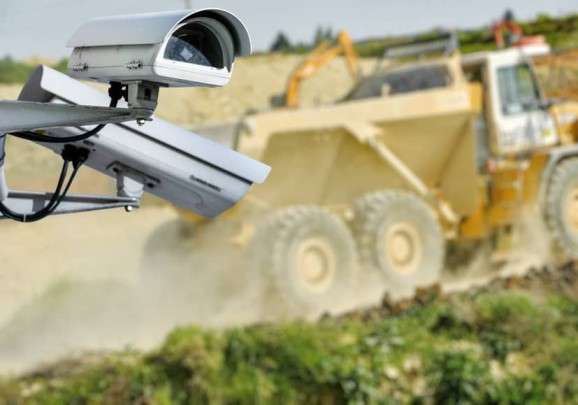Mobile technology has freed businesses from the constraints of operating from a single place, unlocking a slew of new solutions to assist them. As companies seek to grasp the enormous potential of mobility and mobile device management for their operations, there is much that needs to be investigated in order to fully exploit the potential of this mechanism.
Businesses can now function outside of traditional brick and mortar spaces or traditional workspaces thanks to modern technologies. It has made it easier to handle communication and procedures in a unified way, allowing users to obtain information that is relevant and vital at the time. As a result, productivity has increased while expenses have decreased.
These clear advantages have made Enterprise Mobility Management one of the most talked-about subjects in B2B circles and a must for businesses.
What is enterprise mobility management (EMM) and how does it work?
Simply said, it is a universe of interconnected devices. To clarify, EMM is a combination of technologies, processes, and rules designed to protect and control the usage of both personal and company-owned mobile devices to manage an organization’s work from numerous locations.
For data sharing and application access, technologies such as open wireless networks, enterprise cloud-based systems, and personal network systems are used. EMM is a discipline that is constantly changing to keep up with the changing environment of mobile device platforms and mobility trends in the workplace.
This work management trend arose as a result of the “Bring Your Own Device” movement, which encouraged employees to use their personal devices to manage work while still allowing the company’s IT team to maintain control over the company’s assets.
Why is EMM so Important in Today’s Business?
Enterprise mobility management boosts productivity across the board by delivering critical information regardless of the user’s location. It allows users to focus more on the job and customer service by allowing them to reply to consumer concerns as they arise. The ultimate goal is to encourage a substantial shift in how businesses operate, as well as a major shift in how mobile devices are used to unlock job potential.
The Different EMM Models
BYOD
People are becoming increasingly connected, and they use their smartphones for a variety of purposes, including employment. People are more comfortable working on gear that they are familiar with, thus it is only right that they be permitted to do so. Use Your Own Device (BYOD) allows employees to work from practically anywhere by allowing them to bring their own device.
While bringing your own device provides a number of advantages, like lower overhead expenses, it also has several drawbacks that businesses must be aware of. To prevent personnel from misusing official data, adequate IT security measures must be implemented.
COPE
COPE (Corporate Owned Personally Enabled) devices are a safer alternative to BYOD because they don’t represent a security concern while still allowing employees the flexibility they need. Employees can use devices supplied and sanctioned by the company for both business and personal use, and IT loosens up a little on security in this situation. They do, however, have a tight hold on these devices by keeping an eye on their activity.
CYOD
With the growing number of mobile devices and operating systems, IT departments can never be entirely equipped to support all possible mobile variations. In these situations, organizations adopt Choose Your Own Device to find a happy medium.
The enterprise will list approved devices that satisfy important business needs for both the organization and the employee in this manner. Organizations may load the device with the apps they need to boost productivity and safeguard critical data.
Various components of EMM

Mobile Device Management (MDM)
MDM allows a firm’s IT staff to track and control a device that belongs to an employee or the organization. A corporation may set up Wi-Fi access, as well as install and manage enterprise apps, with an MDM solution. It also allowed the IT department to lock and wipe a device remotely in the event that it was stolen.
Mobile Application Management (MAM)
MAM is more focused on managing corporate-owned applications and allowing firms to lock down enterprise applications and data within them. However, it only allows the corporation to manage the programs and content within the applications, not the device as a whole.
Mobile Information Management (MIM)
MIM refers to the software and services that are used to secure and manage sensitive, business-critical data across a variety of devices, both personal and corporate.
Mobile Email Management (MEM)
MEM provides a company’s corporate email infrastructure with full protection. To prevent data loss, enforce rigorous compliance requirements, and encrypt sensitive company data, the enterprise’s IT department has complete control over mobile devices reading emails.
Mobile Content Management (MCM)
MCM is a sort of software that allows for easy content access and sharing from any device within a company. It also makes it simple to share material across various channels within the company network, as well as to the client’s network as necessary.
The Future Enterprise Mobility Management
The scope of EMM has been substantially expanded as a result of technologies like IoT linking nearly any device, be it a wearable or a physical device. According to Juniper Research, about 38 billion people will be connected by 2020, and in this environment, it would be in the best interest of the company to tap into this market by developing a smart EMM strategy. Before establishing a full IoT strategy across the enterprise, firms should embrace EMM technology.
Companies that want to use IoT as part of their new-age technology adoption strategy should have a solid EMM architecture in place. This will assist them in gaining a better knowledge of crucial questions about data management on IoT devices connected to their networks.
It’s important to note that IoT and EMM convergence could be the next big thing in mobility management. Collaboration is a lot easier when you’re always linked, and this offers up a lot of possibilities for future business development and communication.
To Know More about EMM. Contact a tech business consultant today.








